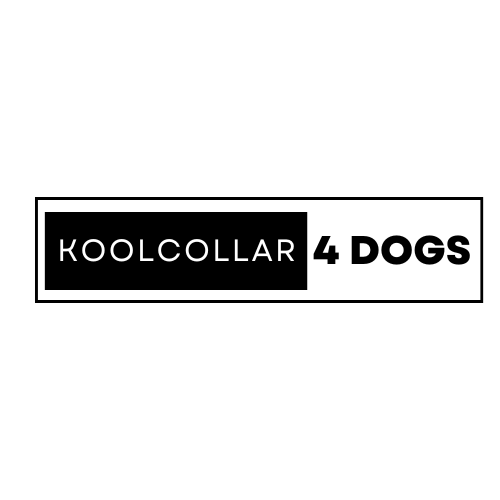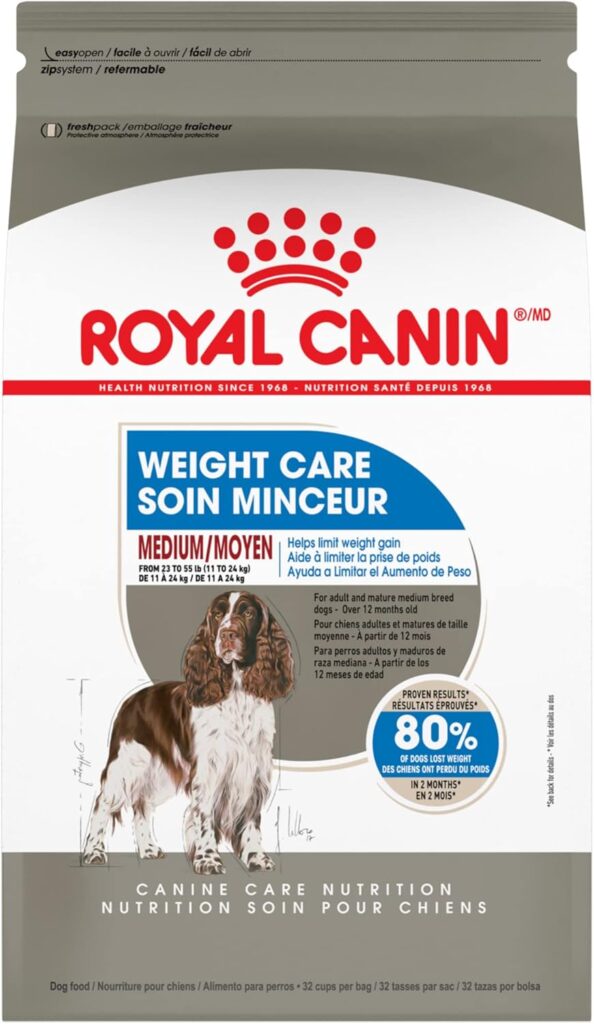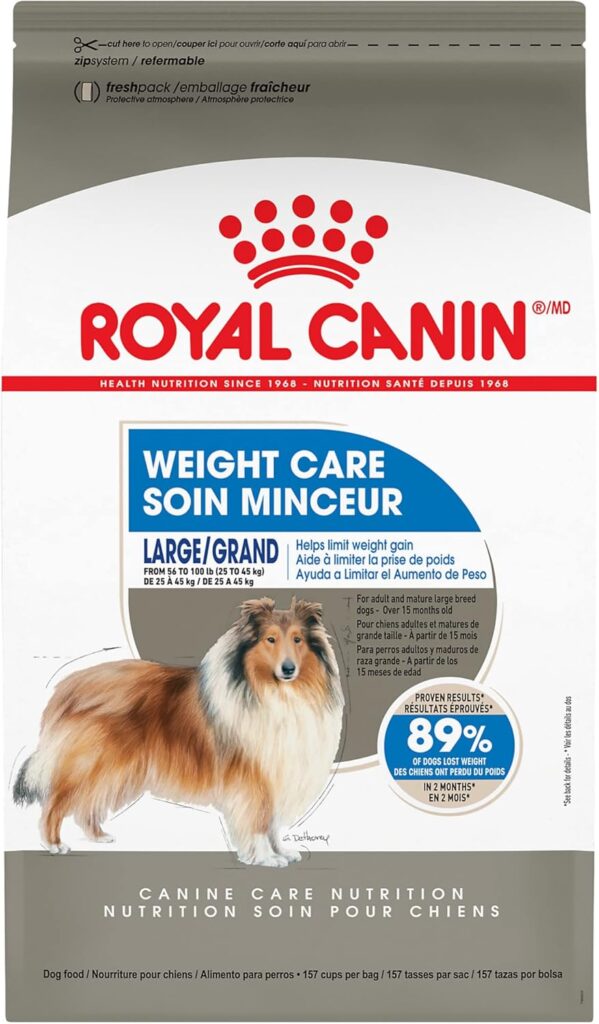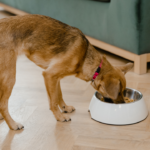
Image Source: Pexels
Health## The importance of weight control for dogs
As a responsible pet owner, ensuring your furry friend’s well-being is a top priority. One crucial aspect of a dog’s health is maintaining a healthy weight. Obesity in dogs can lead to a myriad of health issues, including joint problems, diabetes, respiratory difficulties, and even a shortened lifespan. That’s why choosing the right weight control dog food is so important.
Dogs, like humans, can struggle with weight management due to various factors, such as overeating, lack of exercise, or underlying medical conditions. However, by providing them with a balanced and nutritious diet specifically formulated for weight control, you can help your canine companion maintain a healthy weight and enjoy a better quality of life.
Maintaining a healthy weight not only reduces the risk of obesity-related health problems but also promotes overall well-being, including increased energy levels, improved mobility, and a happier disposition. By taking proactive steps to control your dog’s weight, you’re investing in their long-term health and happiness.
Understanding weight control dog food
Weight control dog food is specially formulated to provide your pet with the right balance of nutrients while controlling calorie intake. Unlike regular dog food, these diets are designed to be lower in calories and higher in fiber, which helps promote a feeling of fullness and aids in digestion.
One of the key differences between weight control dog food and regular dog food is the protein and fat content. Weight control formulas often have a slightly lower protein content and a reduced fat content to help manage calorie intake. However, it’s essential to ensure that the food still provides sufficient high-quality protein to support muscle maintenance and overall health.
Additionally, weight control dog food may contain specific ingredients that help support weight management, such as L-carnitine, which aids in fat metabolism, or glucomannan, a soluble fiber that promotes a feeling of fullness.
Benefits of grain-free weight control dog food
Grain-free weight control dog food has gained popularity in recent years, as many pet owners believe that grains can contribute to weight gain, allergies, and digestive issues in dogs. While the debate around grains in dog food continues, grain-free options can offer several benefits for weight management.
- Improved Nutrient Absorption: Grain-free formulas often use alternative sources of carbohydrates, such as sweet potatoes, peas, or lentils, which can be easier for some dogs to digest, leading to better nutrient absorption.
- Lower Glycemic Index: Many grain-free dog foods have a lower glycemic index, meaning they don’t cause rapid spikes in blood sugar levels. This can help regulate appetite and prevent overeating.
- Potential Allergy Relief: For dogs with grain sensitivities or allergies, grain-free weight control dog food can provide relief from digestive issues and skin irritations.
- Increased Protein Content: Grain-free formulas often have a higher protein content, which can help maintain lean muscle mass during weight loss, promoting a healthy metabolism.
However, it’s important to note that grain-free does not necessarily mean low-calorie or suitable for weight control. Always carefully review the nutritional information and consult with your veterinarian to ensure the grain-free weight control dog food you choose aligns with your pet’s specific dietary needs.
Weight control dry dog food vs. weight control wet dog food
When it comes to weight control dog food, you’ll find options in both dry and wet varieties. Each type has its own advantages and considerations, and the choice ultimately depends on your dog’s preferences and specific needs.
Weight Control Dry Dog Food
- Convenience: Dry dog food is easy to store, portion, and serve, making it a convenient option for busy pet owners.
- Dental Benefits: The crunchy texture of dry food can help scrape plaque and tartar from your dog’s teeth, promoting better dental health.
- Cost-effective: Generally, dry dog food is more affordable than wet food, especially when purchased in larger quantities.
- Calorie Density: Dry food tends to be more calorie-dense, which means your dog may feel fuller on a smaller portion size.
Weight Control Wet Dog Food
- Palatability: Many dogs find wet food more appealing and flavorful, which can be helpful for picky eaters or dogs with diminished appetites.
- Hydration: Wet food contains a higher moisture content, which can contribute to your dog’s overall hydration levels.
- Variety: Wet dog food often comes in a wider range of flavors and textures, allowing you to rotate and vary your dog’s meals.
- Digestibility: The higher moisture content in wet food can aid in digestion, particularly for dogs with certain medical conditions or senior dogs.
Ultimately, the choice between weight control dry dog food and weight control wet dog food may come down to your dog’s personal preferences, budget, and specific dietary needs. Some pet owners opt for a combination of both, providing variety and balancing the benefits of each type.
Exploring different brands of weight control dog food
The pet food market is saturated with numerous brands offering weight control dog food options. While having choices is beneficial, it can also be overwhelming to navigate the various options. To help you make an informed decision, let’s explore some of the top brands in the weight control dog food category.
- Hill’s Science Diet: Hill’s Science Diet is a well-known brand in the veterinary community, offering a range of weight control formulas for dogs of different life stages and breed sizes. Their weight management products are formulated with high-quality proteins and fiber to promote satiety and support lean muscle mass.
- Purina ONE SmartBlend: Purina ONE SmartBlend offers affordable weight control options for dogs, combining real meat as the first ingredient with nutrient-rich grains and fiber sources. Their formulas are designed to provide complete and balanced nutrition while supporting healthy weight management.
- Blue Buffalo Life Protection: Blue Buffalo’s Life Protection line includes weight control recipes that are grain-free and made with high-quality proteins, such as deboned chicken or fish. These formulas also feature LifeSource Bits, a blend of antioxidants, vitamins, and minerals to support overall health and well-being.
- Wellness CORE Reduced Fat: Wellness CORE Reduced Fat is a grain-free weight control dog food that uses high-quality proteins, such as turkey or whitefish, and nutrient-dense superfoods like spinach and blueberries. These formulas are designed to provide complete and balanced nutrition while supporting healthy weight management.
- Nutro Wholesome Essentials Weight Management: Nutro Wholesome Essentials Weight Management is a line of weight control dog food that features farm-raised chicken or lamb as the first ingredient, along with whole grains and natural fiber sources. These recipes are designed to be nutrient-dense and support a healthy weight.
Remember, every dog is unique, and their dietary needs may vary based on factors such as age, breed, activity level, and overall health. It’s always best to consult with your veterinarian to determine the most suitable weight control dog food for your furry friend.
Reviewing Royal Canin weight control dog food
Royal Canin is a well-respected brand in the pet food industry, known for its commitment to providing high-quality, scientifically formulated diets for dogs and cats. Their weight control line is no exception, offering a range of products designed to support healthy weight management in dogs of various breeds and life stages.
Royal Canin Breed-Specific Weight Control Formulas
One of the standout features of Royal Canin’s weight control line is their breed-specific formulas. These diets are tailored to the unique nutritional needs and characteristics of different dog breeds, ensuring optimal weight management and overall health.
For example, the Royal Canin Labrador Retriever Weight Care formula is designed specifically for the breed’s tendency towards weight gain and takes into account their high energy levels and appetite. It provides a balanced blend of proteins, fibers, and nutrients to support lean muscle mass while promoting a feeling of fullness.
Royal Canin Veterinary Diet Weight Control Formulas
Royal Canin also offers a range of veterinary diet weight control formulas, which are formulated under the guidance of veterinarians and nutritionists. These diets are often recommended for dogs with specific weight-related health concerns, such as obesity, diabetes, or joint issues.
The Royal Canin Veterinary Diet Satiety Support formula is designed to help dogs feel fuller for longer, thanks to its high fiber content and special blend of proteins. This diet can be particularly helpful for dogs that tend to beg for food or overeat.
Advantages of Royal Canin Weight Control Dog Food
- High-Quality Ingredients: Royal Canin uses high-quality proteins, fibers, and nutrients in their weight control formulas, ensuring optimal nutrition for weight management.
- Breed-Specific Formulas: Their breed-specific diets cater to the unique nutritional needs of different dog breeds, promoting effective weight control and overall health.
- Veterinary Expertise: Royal Canin’s veterinary diet formulas are developed in collaboration with veterinarians and nutritionists, ensuring scientific accuracy and efficacy.
- Palatability: Royal Canin’s weight control formulas are known for their appetizing flavors, making it easier to transition dogs to a weight management diet.
While Royal Canin weight control dog food may be slightly more expensive than some other brands, many pet owners find the investment worthwhile for the quality, expertise, and tailored formulations offered by this reputable brand.
Tips for choosing the best weight control dog food
With so many options available in the market, selecting the right weight control dog food for your furry companion can be a daunting task. To help you navigate this process, here are some valuable tips to consider:
- Consult Your Veterinarian: Your veterinarian is the best source of guidance when it comes to your dog’s dietary needs. They can evaluate your pet’s health condition, activity level, and any underlying medical issues to recommend the most suitable weight control dog food.
- Read Ingredient Labels Carefully: Pay close attention to the ingredient list on the dog food packaging. Look for high-quality protein sources, such as real meat or fish, as the first ingredient. Avoid formulas with excessive fillers, by-products, or artificial preservatives.
- Consider Your Dog’s Age and Breed: Different breeds and life stages have varying nutritional requirements. Choose a weight control dog food that is specifically formulated for your pet’s age, breed size, and activity level.
- Look for Fiber and Protein Content: Fiber plays a crucial role in promoting a feeling of fullness and aiding digestion, while protein helps maintain lean muscle mass during weight loss. Look for formulas with appropriate levels of both.
- Check for Calorie Content: Weight control dog foods should have lower calorie content compared to regular dog food. However, be cautious of formulas that are excessively low in calories, as this can lead to nutrient deficiencies.
- Transition Gradually: When introducing a new weight control diet, it’s essential to transition your dog gradually. Start by mixing a small portion of the new food with their current diet, and gradually increase the ratio over a period of 7-10 days to prevent digestive upset.
- Consider Your Budget: While quality should be a priority, weight control dog food can vary significantly in price. Determine a budget that works for you and look for reputable brands that offer value for money.
- Monitor Your Dog’s Progress: Keep a close eye on your dog’s weight, body condition, and overall health after introducing the new weight control diet. Adjust portions or switch formulas if necessary, in consultation with your veterinarian.
Remember, choosing the right weight control dog food is an investment in your pet’s long-term health and well-being. Take the time to research and consult with professionals to ensure you make an informed decision that meets your furry friend’s unique needs.
How to transition your dog to a weight control diet
Transitioning your dog to a weight control diet is a crucial step in promoting their overall health and well-being. However, it’s important to approach this process gradually and with care to prevent digestive upset or other adverse reactions. Here’s a step-by-step guide to help you make the transition as smooth as possible:
- Consult with Your Veterinarian: Before making any dietary changes, it’s essential to consult with your veterinarian. They can assess your dog’s current weight, body condition, and overall health to determine the appropriate weight control diet and portion sizes.
- Introduce the New Food Gradually: Abrupt changes in diet can lead to digestive issues, such as vomiting, diarrhea, or loss of appetite. To avoid these problems, start by mixing a small portion (about 25%) of the new weight control dog food with your dog’s current diet. Over the course of 7-10 days, gradually increase the ratio of the new food while decreasing the old food.
- Monitor Portion Sizes: Weight control dog foods are often calorie-dense, so it’s crucial to follow the recommended portion sizes on the packaging or as advised by your veterinarian. Overfeeding can undermine the weight management goals and lead to further weight gain.
- Adjust Gradually: If your dog seems to be struggling with the transition or experiencing digestive issues, slow down the process or temporarily revert to their previous diet. Gradual adjustments are key to allowing your dog’s digestive system to adapt to the new food.
- Increase Exercise: Along with dietary changes, it’s essential to incorporate regular exercise into your dog’s routine. This not only helps burn extra calories but also promotes overall health and well-being.
- Be Patient and Consistent: Weight management is a long-term process, and it’s important to be patient and consistent with your dog’s new diet and exercise regimen. Celebrate small victories and don’t get discouraged if progress seems slow – every step counts towards a healthier life for your furry friend.
- Monitor Progress and Adjust as Needed: Regularly weigh your dog and assess their body condition. If they are not losing weight at the desired rate or seem to be losing weight too quickly, consult with your veterinarian to adjust the portion sizes or consider switching to a different weight control formula.
Remember, transitioning your dog to a weight control diet is not just about helping them shed excess pounds – it’s about promoting their overall health, longevity, and quality of life. With patience, consistency, and guidance from your veterinarian, you can successfully navigate this journey and help your beloved pet achieve a healthier, happier life.
Common misconceptions about weight control dog food
When it comes to weight control dog food, there are several misconceptions and myths that can lead pet owners astray. It’s important to separate fact from fiction to ensure you’re making informed decisions about your dog’s diet and health. Here are some common misconceptions about weight control dog food, debunked:
- Myth: Weight control dog food is just a marketing gimmick. Reality: Weight control dog food is specifically formulated with a balanced blend of nutrients, proteins, and fibers to support healthy weight management. These diets are designed to provide your dog with the necessary nutrition while controlling calorie intake, preventing obesity and related health issues.
- Myth: Weight control dog food is low in protein and nutrients. Reality: Reputable weight control dog food brands ensure that their formulas are complete and balanced, providing the essential nutrients, vitamins, and minerals your dog needs. While they may have slightly lower protein levels compared to regular dog food, the protein content is still sufficient to maintain lean muscle mass during weight loss.
- Myth: Grain-free weight control dog food is always better. Reality: While grain-free formulas can be beneficial for dogs with grain sensitivities or allergies, they are not inherently better for weight control. The quality of the ingredients and overall nutritional balance are more important factors to consider when choosing a weight control diet.
- Myth: Weight control dog food is only for overweight dogs. Reality: Weight control dog food can be beneficial for dogs of all sizes and weights. It can help maintain a healthy weight, prevent obesity, and support overall health and well-being, even for dogs that are not currently overweight.
- Myth: Weight control dog food tastes bad, and dogs won’t like it. Reality: Many weight control dog food brands prioritize palatability, ensuring that their formulas are appealing and tasty for dogs. By using high-quality ingredients and flavors, these diets can be just as enjoyable for your furry friend as regular dog food.
- Myth: Weight control dog food is expensive and not worth the cost. Reality: While some premium weight control dog food brands may be more expensive, the investment in your dog’s health and longevity can be well worth it. Additionally, many affordable and high-quality options are available from reputable brands, making weight control diets accessible to pet owners on a budget.
By debunking these common misconceptions, you can make informed decisions about your dog’s diet and provide them with the best possible nutrition for a healthy and happy life.
Conclusion: prioritizing your pet’s health with the right weight control dog food
Maintaining a healthy weight is crucial for your dog’s overall well-being and longevity. By choosing the right weight control dog food, you can help your furry companion achieve and maintain a healthy body condition, reducing the risk of obesity-related health issues and promoting a better quality of life Choosing the appropriate weight control dog food requires careful consideration of your pet’s individual needs, preferences, and any underlying health conditions. Consult with your veterinarian to determine the best option, taking into account factors such as breed, age, activity level, and any specific dietary requirements.
Transitioning your dog to a weight control diet should be a gradual process, allowing their digestive system to adjust to the new food. Be patient and consistent, and monitor your pet’s progress closely, making adjustments as necessary in consultation with your veterinarian.
Remember, a healthy weight is not just about aesthetics; it’s about ensuring your furry friend lives a long, happy, and active life, free from the complications associated with obesity. By prioritizing your pet’s health and well-being, you’re investing in countless moments of joy, companionship, and unconditional love that only a beloved canine companion can provide.
Embrace the journey of weight management with a positive mindset, and celebrate every milestone along the way. Your dedication and commitment to your dog’s health will be rewarded with a stronger bond, a happier pet, and the peace of mind that comes from knowing you’ve done everything in your power to ensure their well-being.




